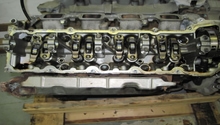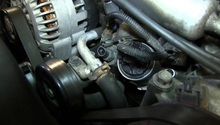Chevrolet Silverado 2007-2013: How Does AFM Work?
The Active Fuel Management system is designed to increase the fuel economy of your engine, without decreasing its overall power potential. Read this article to find out just how this system works.
This article applies to the Chevrolet Silverado GMT900 (2007-2013).
The AFM system, or Active Fuel Management system, is used to limit the power of a GM 6-cylinder or 8-cylinder engine and help increase its fuel economy. The system itself is activated when the engine reaches certain perimeters, such as a cruising highway speed. This allows a 6-cylinder and 8-cylinder engine to run on only four cylinders. Your Chevy Silverado is able to maintain a 5% to 7.5% increase in fuel economy through the use of this system. The GM AFM system can be broken down into three main components: the lifters, camshaft, and ECU.
Component Breakdown
Valve Lifters
The lifters controls how a valve opens and closes on the engine. When one fails, the engine becomes unusable. Unfortunately, GM has had a high number of complaints in regards to its AFM system; usually dealing with damaged lifters that result in the engine needing a complete rebuild in order to be repaired.

AFM Camshaft
The camshaft is a mechanical component of an engine, which is operated by the timing belt or chain of an engine. While the camshaft turns, the valve lifters move up and down. AFM camshafts have different sized lobes, which are used specifically to turn the AFM lifters.

ECU
The AFM system is computer controlled and involves several of the engine sensors, which help it determine whether or not the engine should begin to run lean. It sends signals to two special solenoids located in the oil manifold to open passages that directs oil into special chambers, causing the lifters to close. When the ECU is damaged, the car will not start and the computer unit will need to be replaced.

Common Questions
What Does AFM Do?
The AFM system cuts down the use of an engine's cylinders after certain perimeters are met, and increases the overall fuel economy of the engine.
Are There Similar Systems to the AFM?
The AFM is not a one-off design, and every major automotive manufacturer has their own device to increase fuel economy. Popular alternatives include "Stop/Start" systems and variable valve timing to increase efficiency at all points in the power band.
Common Issues
Valve Lifter Damaged
The valve lifter may either become stuck closed or broken due to lubrication issues. This results in an extremely costly repair, such as either replacing the complete engine assembly or rebuilding it. Both of which should not be done without the help of an expert.
Oil Consumption
The AFM system can cause the oil to spray onto the engine's pistons. The heat from the engine causes it to quickly heat up and burn the oil. Repair requires replacing the pistons and rings by rebuilding the engine.
Technical Service Bulletins (TSB)
- 01-03-13: 10-06-01-008G - Engine Oil Consumption on Aluminum Block/Iron Block Engines with Active Fuel Management (AFM) (Install AFM Oil Deflector and Clean Carbon from Cylinder and/or Install Updated Valve Cover)
Related Discussions
- 2008 5.3l AFM "Blown" Lifters & Camshaft $$$$ - ChevroletForum.com
- GM Active Fuel Management Woes - ChevorletForum.com
- Active Fuel Management - ChevroletForum.com
- Excessive Oil Consumption - ChevroletForum.com






